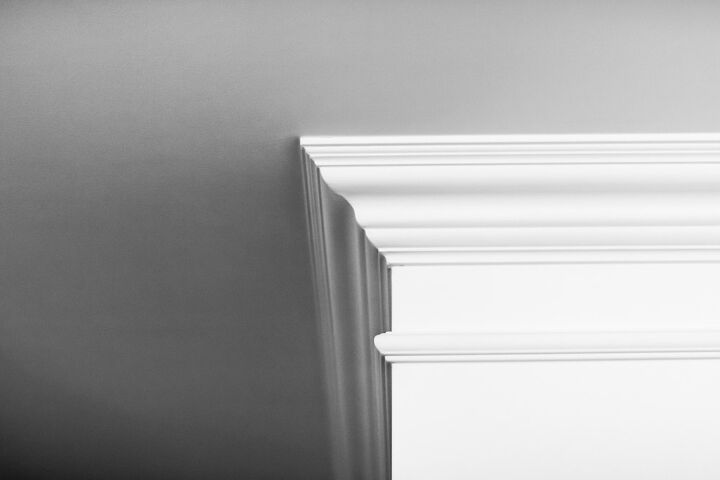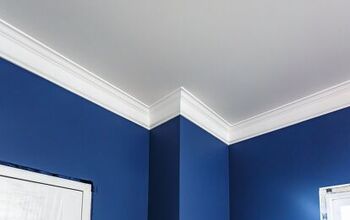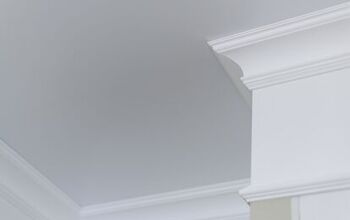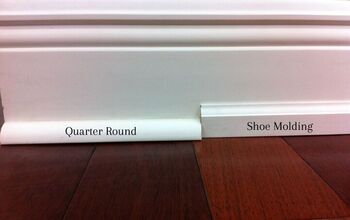Cornice Molding Vs. Crown Molding: What Are The Major Differences?

Molding can be a beneficial addition to any home. Though we tend to be most familiar with crown molding, there are actually a variety of types that can work just as well depending on the application. Like cornice molding, for instance.
But what is the difference between the two? They are quite similar and often confused. Cornices are technically crown molding decorative, but crown molding is cornice. Cornices are essentially a type of crown molding that essentially forms an overhang. They sit on top of the wall, projecting outwards with the edges that are highest sticking out at the roofline. You would find cornices in more classic style homes.
Do You Need Interior Trim or Decorative Molding Installation?
Get free, zero-commitment quotes from pro contractors near you.

Okay, What’s the Difference?
A cursory google search will likely leave you more confused than when you started. Crowns are considered cornices; cornices are considered crown. Both of them are meant to be ornamental trim that cover the juncture where the wall ends and the balcony, ceiling or roof begins.
Crown molding indicates that it goes on top of something (as a crown would). The edges then flare up, which makes them rise higher than the top of the wall. Crown moldings help add character and draw your eyes upward, which can make the space feel taller.
Cornices, meanwhile, are basically a type of crown molding. They sit at the topmost point of the wall, projecting outward while the uppermost edges protrude right around at the roofline. The exterior cornice can take on the right angle, which forms an overhang. It can make for both a decorative and practical design. Check out the difference between cove and crown molding.
What is Crown Molding?
Let’s take a deeper look at the two different types of molding. Crown gets its name because it “crowns” or “caps” a particular structure. In most cases, that means a wall but it can also be a bookshelf, armoire, cabinet, or even a fireplace.
Crown molding can be as simple or elaborate as you choose. It is meant to elevate the interior design of a room by closing the gaps between your ceiling and walls. Crown, however, is strictly used as an interior design element.
The best thing about implementing crown molding is that you can make it what you will. If you want a simple barrier between ceiling and wall, it can do that. If you want something elaborately carved, you can go that way as well. Or you can implement it into your furniture or a fireplace to achieve a more ornate design there.
What are Some Examples of Crown Molding?
The simple fact of the matter is that crown molding can provide serious versatility from a design aspect. There are options that are as clean as can be while some others are far more decorative to fit your specific design aesthetic.
There are also a wide array of sizes that can accommodate any size ceiling for a pristine, near-customized look. You will find crown molding in kitchens, cabinets, even columns as well.
Any place that you want to add a little separation and give the room height, crown molding should be the choice. Find out if it is a good idea to put crown molding in a bathroom.
What is Cornice?
Originally, cornice was used as a decorative component in horizontal structures. That is, it was added to the outside of buildings in order to help direct rainwater out and away from the building that it is attached to. The structure would just out and simply attached do the columns when they were connected to a building.
A cornice, however, is any connecting horizontal structure that crowns or caps the top of a wall or any other type of architectural structure. That sounds a lot like crown molding, doesn’t it? That is because cornice is also used in a similar manner to crown molding, making them seemingly interchangeable at times.
What are Some Examples of Cornice in Architecture?
Cornice was actually used a lot in historic designs, particularly in the structures of ancient Greece. You would generally see them placed between and horizontally above columns. They were meant to serve more of an architectural function than anything else.
Throughout the years, cornices transformed more into decorative features on the outside of main street American buildings. Those designs at the top of those buildings that have become so revered and famous? Cornice details.
Many department stores, government or office buildings, and banks that have been built in the 19th and 20th centuries use cornice details. They have ornamental cornices that have been installed for both design as well as function.
Cornicing in Residential Buildings
For modern purposes, you generally find cornices as both indoor and exterior architectural elements. On the building’s façade, for instance, you may see highly decorative cornice. It can be functional – directing water away from the building – or more simply may just have attractive, eye-catching designs.
The great thing about cornice is it can be either as simplistic or complicated as you desire. Because of the general similarities between cornice and crown molding, there is some confusion when it comes to installation.
Remember that the two serve a similar purpose: creating a smooth transition from the ceiling and the top of the wall.
Materials Matter for Molding
Now that you have a better idea of the difference between cornicing and crown molding, you can focus on the installation. The key to your molding installation is to have the right materials for the job. These are two very different, yet similar, types of crown molding.
For the most part, polystyrene is the choice for molding material. The primary reasons being that it is very easy to install, is both flexible and lightweight, is highly durable, and it is actually resistant to weather, moisture, impact, and even pests.
Consult with your local builder before attempting to install crown molding. You want to ensure that you have the right materials for your specific job. The last thing that you want to do is install ill-fitting crown molding as that can actually harm the value of your home in the long run.
When Should Cornice be Used?
The simple answer can be “wherever you want” but there is a better answer than that. For the most part, cornicing is used for outdoor structures. That is because it is generally used to help guide water away from the building.
That said, you can install cornicing in any room of your home either in addition to or in place of crown molding. It is a more ornate, elaborate form of crown molding in that it juts out and acts as a “ledge” at the highest point off the room.
You could put cornice over a window or door, around the top edge of a pedestal, or even at the top of any of your interior walls.
When Should Crown Molding be Used?
Generally speaking, you will get greater versatility and usefulness out of crown molding than you would using cornice. Here are some of the more common uses for crown molding, though there are many different applications.
Crown Molding Between the Wall and Ceiling
The most common use is to provide some separation between the ceiling and wall. Generally speaking, this is done at a 45-degree angle right at the sharp edge where both the wall and ceiling would meet. It creates a very stark, visual distinction between the two.
At the corners, the moldings can be joined using either coped joints or mitered joints depending on your choice. Coped crown molding means a greater level of craftsmanship for a higher-end appearance than mitered joints would.
Dressing Up Cabinets
Another very common application for crown molding is to improve cabinet soffits. The soffits are the spaces that separate the ceiling and the top of the cabinets. When homeowners extend the cabinets to the ceiling, the soffits are eliminated.
Some homeowners will keep those soffits but use a strip of crown molding at the topmost edge of the cabinetry. It is kind of similar to attaching crown molding to something like architectural parapets. The upper part of the crown molding hangs in the air, not attached to anything else.
Running crown molding at the top of cabinets can get rid of the choppiness of the cabinet edges while also providing an air of luxury and distinction to both bathroom and kitchen cabinets.
Do You Need Interior Trim or Decorative Molding Installation?
Get free, zero-commitment quotes from pro contractors near you.

Interior Doorways
Trim is necessary for any interior wall openings. So, why not make that opening as aesthetically pleasing as possible by going with crown molding as a trip option? Installing crown molding can make for a luxurious way to signify the difference between a dining room and living room, for instance.
Should you have a room that either has a coffered ceiling or elaborate trim, then having a crown molding entrance can act as a proper lead-in as an introduction to the next room’s style.
Finishing Partial Walls
There are some homes that have unfinished walls, stopping short of the ceiling. Think closets that have been retroactively built into tall-ceiling homes. A great way to close off that gap is to use crown molding to ornately finish off that gap.
You can simply nail the crown molding onto the edge of these walls, acting as parapets. The molding would jut into the open air, providing a sense of class and elegance.
Related Guides

Ryan Womeldorf has more than a decade of experience writing. He loves to blog about construction, plumbing, and other home topics. Ryan also loves hockey and a lifelong Buffalo sports fan.
More by Ryan Womeldorf



















![10 Most Dangerous Neighborhoods in Baltimore [Updated]](https://cdn-fastly.upgradedhome.com/media/2023/07/31/9075655/10-most-dangerous-neighborhoods-in-baltimore-updated.jpg?size=350x220)







